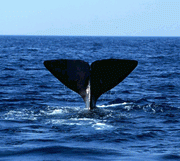The construction of underwater infrastructures for neutrino telescopes has lead to improvements and novel solutions in deep-sea technology and science.
A mandatory request for these apparatuses is, indeed, the permanent connection between a shore laboratory and the abyssal detector to power-up the sensors and electronics and allow high data-rate transmission to shore. The neutrino telescopes infrastructures have thus become optimal sites for installation of Earth and Sea science nodes, allowing long-term and real-time access for oceanographic, geophysical and biological instrumentation already deployed in deep-sea.The KM3NeT deep-sea installations in France and in Italy already provide access to the Earth and Sea science community through direct connection to the detectors and/or through dedicated instrumentation connected to the Junction Boxes (nodes) and installed in the Detection Units. Such instrumentation provides important information for neutrino telescope calibration: measurement of water optical and oceanographic properties, behaviour of bioluminescent organisms, measurement of sea currents, and identification of acoustic noise sources provide information – in the domain of the Earth and Sea Science community – required to calibrate and monitor the response of underwater neutrino detectors. A fruitful collaboration with the EMSO facility for Earth and sea science research, which takes profit of our seabed infrastructure, has been established since many years.


